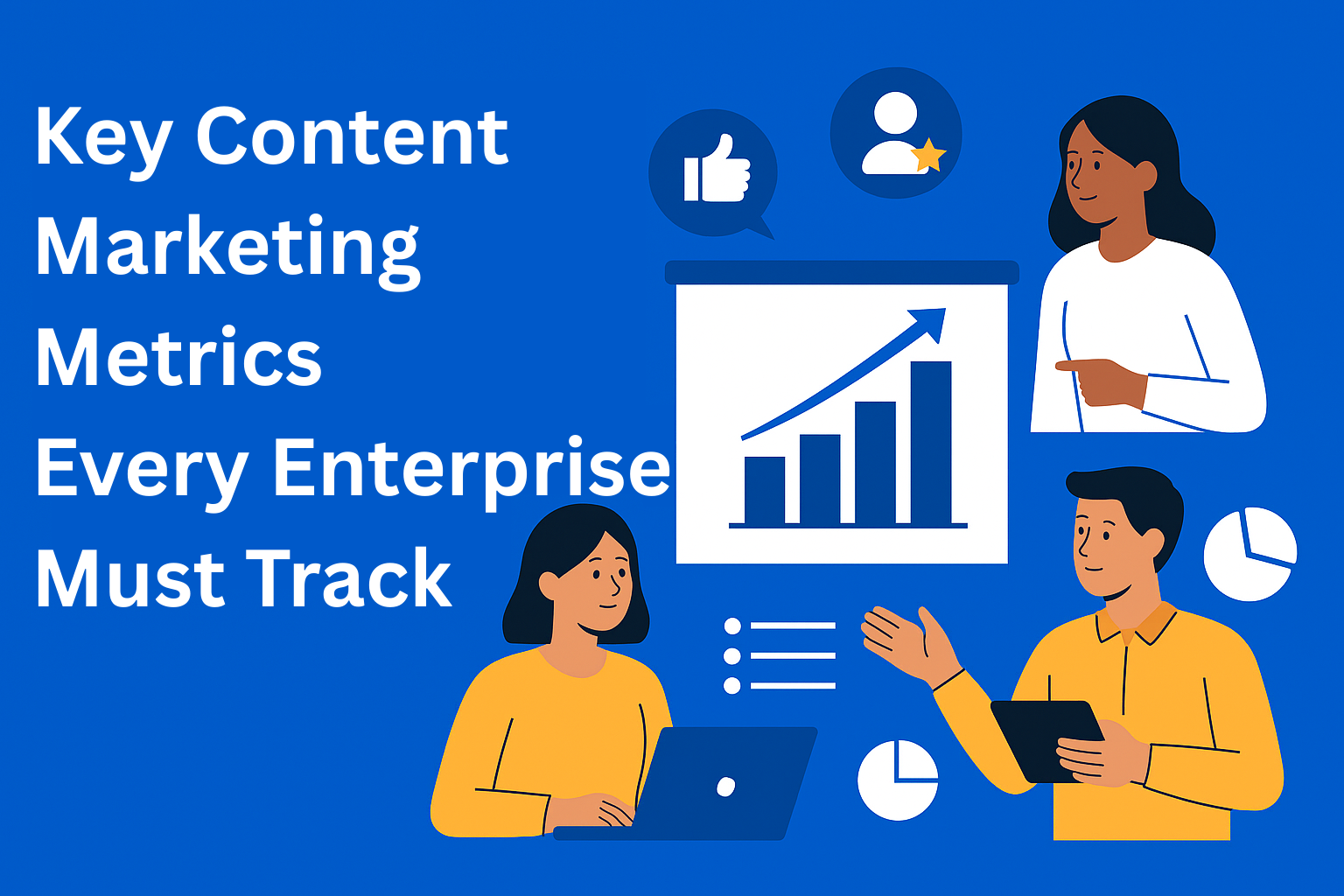Proving the Value: Key Content Marketing Metrics Every Enterprise Should Track
Discover the key content marketing metrics every enterprise should track. From traffic and engagement to ROI and customer loyalty, learn how to measure what truly proves the value of your content.

Content marketing is today one of the most important tools for any large company. Brands invest huge amounts of money and time into creating content - from blogs and videos to email campaigns and social media. But one question always comes up: how to show the value of content marketing?
To achieve this, it is necessary to track the right metrics. Just counting likes or views often doesn’t tell us anything about whether content is really helping the business. That’s why in this article, we will explain which key metrics every enterprise should measure, and why they matter.
Key Takeaways
- Vanity metrics aren’t enough - likes and traffic look good but don’t always reflect real business impact.
- Track metrics that align with business goals - focus on lead generation, conversions, ROI, and customer retention.
- Use a mix of metrics - combine traffic, engagement, conversion, revenue, and loyalty indicators to get the full picture.
- Measure content's role in sales funnel - monitor MQL to SQL conversions to see how content drives qualified leads.
- Prove ROI with cost vs. value data - track how much content reduces acquisition cost and increases customer lifetime value.
- Adjust strategy based on insights - don’t just collect numbers; use them to refine content, target audience, and messaging.
Why Metrics Matter
When we talk about content marketing, metrics are like navigation. They show us where we are and if we are going in the right direction. If we focus only on surface numbers, like page views or likes on social media, we can get the wrong picture. These are so-called “vanity metrics” - they look nice, but often don’t show real impact.
The right metrics must be connected with broader business goals, such as:
- Does the content bring new clients?
- Does it help with sales?
- Does it build long-term trust?
When we track important indicators, it becomes easier to make budget and strategy decisions, and more importantly, to prove ROI.
Key Metrics to Track
1. Traffic and Engagement Metrics
The first thing everyone tracks is website traffic. Website Traffic shows us how many people come to the content. But visits alone are not enough. We also need to look at Average Time on Page and Bounce Rate. If people leave the page quickly, it means the content is not interesting or useful enough. All of these metrics can be measured using Google Analytics and similar tools.
Also, Social Engagement (comments, shares, and mentions) shows how valuable content is to the audience. If people share it, that’s a good sign that the content meets their needs.
2. Lead Generation and Conversion Metrics
Every enterprise wants to know how much content brings in new potential customers. Here, metrics like Click-Through Rate (CTR) are important - how many people click a link in an email or post. Even more important is Lead Conversion Rate, which shows how many visitors become leads.
When a lead becomes an MQL (Marketing Qualified Lead), the next step is SQL (Sales Qualified Lead). That’s why the MQL to SQL Conversion rate is important, because it shows how much content helps in turning interested people into real sales opportunities. You can measure this with tools like HubSpot, Salesforce, or Marketo.
3. Revenue-Driven Metrics
At the end of the day, everything comes down to revenue. That’s why metrics connected to finances are key. One of them is Customer Acquisition Cost (CAC) - how much it costs to get a new customer through content marketing. Another is Customer Lifetime Value (CLV) - how much value a customer brings over time. If content reduces costs for getting new customers (for example, less money spent on ads because customers arrive through organic content) or increases the overall value of a customer, it’s clear that content helps the company grow.
Of course, there is also the most important calculation - Content ROI. This is the ratio between what we invested in creating content and the revenue that content brought in. If ROI grows, it means content marketing is worth the investment.
4. Retention and Loyalty Metrics
Content marketing is not only for attracting new clients but also for keeping existing ones. Email Engagement (opens and clicks in newsletters) shows how much the audience stays in touch with the brand. Repeat Visits and Returning Customers indicate that content builds loyalty. When customers come back, it means the brand is giving them value and trust.
Another important indicator is Net Promoter Score (NPS), which measures how willing people are to recommend the brand to others. If content drives high NPS scores, it means we are not only keeping customers but also building brand ambassadors.
How to Measure and Interpret Metrics
Tracking metrics is not enough - it’s important to know how to interpret them. First, we need to set goals. If the goal is to increase sales, then Lead Conversion is more important than just traffic. If the goal is brand building, then engagement matters more.
Tools like Google Analytics, HubSpot, and Salesforce help here. They allow you to track metrics in one place and connect them to business results.
A big mistake is relying on just one metric. For example, if we have high traffic but no one buys or leaves their information, then the content is not delivering real value. That’s why it’s important to combine different indicators to get the full picture.
Case Study (Example)
Imagine a large B2B company that invested in blogs and e-books. At first, they only tracked traffic and were happy with the high number of visits. However, sales were not growing. When they started measuring Lead Conversion and MQL to SQL Conversion, they discovered the content was attracting the wrong audience. After adjusting topics and CTAs, the number of qualified leads increased by 40%, and ROI finally showed growth. This is an example of how focusing on the right metrics can change strategy.
Conclusion
Measuring the value of content marketing is not optional, but a necessity for every enterprise. The right metrics (from traffic, through lead generation, to ROI and loyalty) show whether content truly contributes to business goals. It’s important to measure consistently and keep adjusting the strategy.
In the end, content marketing is not just a story - it has to show numbers. When we track metrics that make sense, we can easily prove value and build a strong case for further investment.






